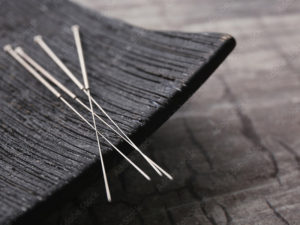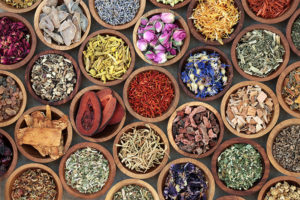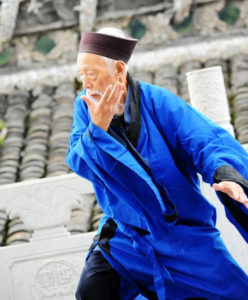Services
“If there is free flow, there is no pain; if there is pain, there is lack of free flow.”
– Maxim of Chinese medicine
Acupuncture
Acupuncture involves the insertion of very thin needles into specific point locations on the body. These points are carefully selected and often represent a defined treatment strategy in that these points not only have individual functions, but also interact with each other in a way that harmonizes and optimizes the entire system by regulating, balancing and moving Qi. Although acupuncture originated in China, it spread throughout Asia and beyond. Various systems have emerged in Korea, Japan, Vietnam as well as France. Within China, there are a variety of family lineage systems. There is also the use of micro-systems (hand, scalp, ear, abdomen) which can be used to treat conditions in any part of the body. All needles used are sterile and single use.

Herbal medicine
Traditional Chinese Medicine has in its toolbox one of the most sophisticated forms of herbal medicine in the world. Inquiry into the properties of plant, mineral and animal substances have been studied and recorded for thousands of years. This distilled knowledge has been passed down and takes the form of the hundreds of classical formulas. Traditionally, raw herbs are decocted and ingested as tea. Aside from raw herbal decoctions, we now use granules and pills as a convenient alternative. The brilliance of Chinese herbal medicine is that single herbs are combined to create formulas. These formulas are constructed in a way to maximize the effects of the herbs as well as balance their effects so that they interact symbiotically with each patient’s constitution and pattern.
It is not uncommon that after a period, sometimes as short as four days, a formula is modified as the patient improves, and their physiology responds to the herbal treatment. Herbal medicine is predominately thought of as internal medicine but many of these formulas can be crafted into poultices and liniments that can be used for external conditions. There is a large portion of herbal medicine that was developed through the martial tradition.
Years ago, I sustained a very bad hematoma on my foot from sparring. This resulted in extreme black and blue bruising, pain and swelling, as well as limited range of motion. After getting an X-ray to rule out a fracture the doctor simply said, “ice it and leave it alone”. Subsequently, I went to a TCM practitioner who used an herbal poultice externally, herbal “hit medicine” pills to take internally, as well as acupuncture. He said “come back in two days”! When he unwrapped my foot, the swelling was gone, there was a slight outline of pink where the black and blue (it was mostly black) had been, and the pain was gone within the first twelve hours. Suffice it to say, an injury that would have sidelined me from training for weeks was resolved in four days and I was back in the gym training.
The other aspect of “herbal medicine” that is often overlooked is diet. Many herbs are in fact food. Especially in their natural form, different foods have medicinal or healing properties. Many of the leading ailments that are affecting so many people today can be effectively treated with dietary and lifestyle adjustments. Again, the foundational principle of TCM is balance and harmony.
One of the most empowering things a patient can do is to take charge of what they consume.
As with all modalities of treatment, in dietary therapy a patient’s condition, constitution and other factors are taken into consideration. It has been my experience that TCM dietary therapies often broaden the food choices rather than restrict them. A patient being well fed, satisfied and energized by their nutrition can be thought of as them receiving a daily herbal treatment. That affects their entire being.

Tui Na (Chinese Bodywork)
Tui Na in Chinese literary means “Push and grasp”. It is similar to shiatsu and other forms of bodywork. Tui Na also includes a sophisticated system of bone-setting. In my practice, I often use it as a diagnostic tool. Especially for orthopedics, circulation or pain conditions. Tui Na not only involves what could be considered massage but also manipulation of joints and tissues. Assisted stretches, range of motion techniques, muscle/sinew releases and mobilizations are all used. This coupled with acupuncture and liniments have proven to be extremely effective at resolving even the most recalcitrant conditions.

Qigong (literally “Qi work”)
My personal preference for defining Qigong is either “life-force cultivation” or “tuning up our Bio-electricity”. Qi is one of those words that is hard to define. Like many of the ancient languages, Classical Chinese points to a semantic field of understanding rather than a particular word having a fixed meaning. Etymology aside, Qigong in its myriad forms has been practiced for millennia. It is a system of postures, movements, breathwork, sound and meditation that allows the practitioner to connect to, feel and eventually affect the flow of Qi in the body.
Its roots, according to historians, go back 4,000 years. It has streams rooted in Confucianism, Daoism and Buddhism. It is akin to Yoga in that it is not just a physical practice, but it is accompanied by internal mechanisms related to breathing, mind intention, mantra, and visualization. Many would say that the physical structure/ movement without the internal processes is not Qigong. While there are ongoing efforts to quantify effectiveness and mechanism of action by using randomized control trials that meet “accepted medical standards”, many have fallen short.
In my professional opinion, many of these shortcomings are due to the lack of ability, at the present time, to quantify the mechanisms of Qigong. Be that as it may, the numbers of people with objective and measurable improvement in areas such as bone density, immune function, inflammation, hypertension and pain statistically point to much more than anecdotal evidence that Qigong is real and works.
It is not uncommon in my practice to give patients Qigong exercises to compliment my treatments. Much like dietary recommendations, Qigong is empowering in that the patient can make it part of their daily routine. I often describe it to patients as both a de-stressor and an energy booster all in a quick, relatively easy to do package.
